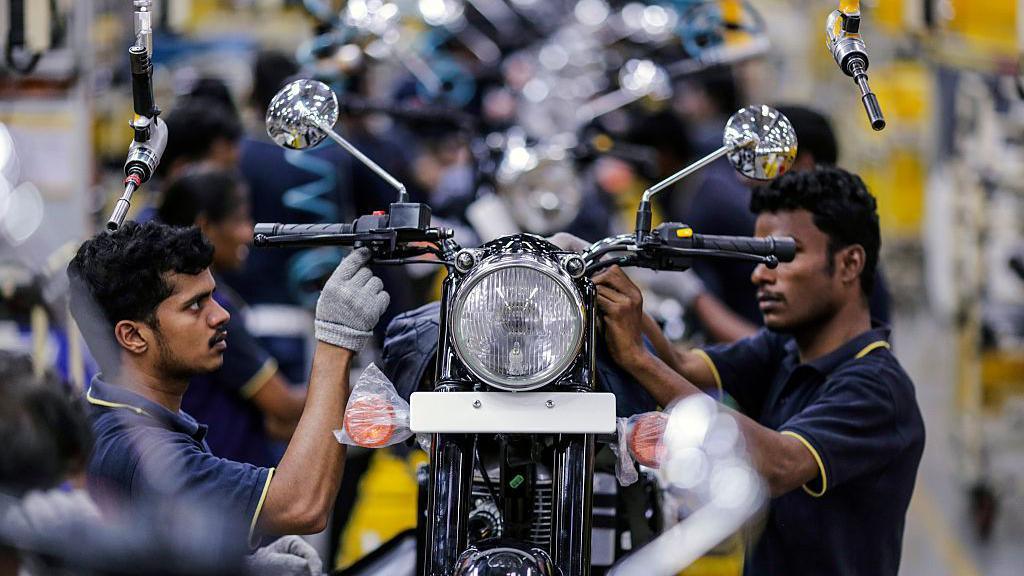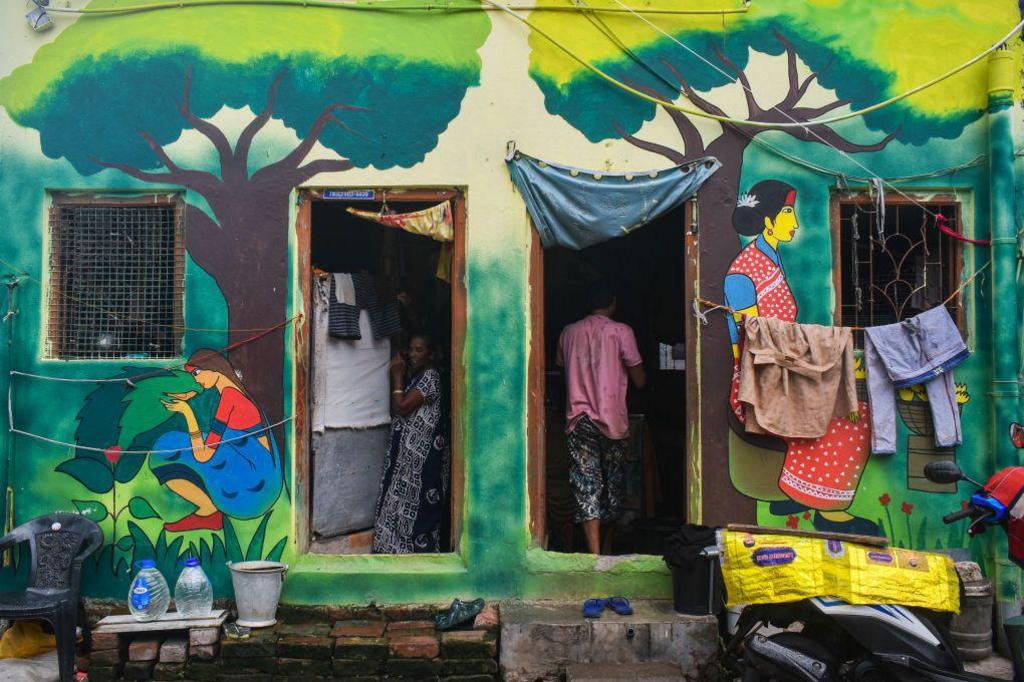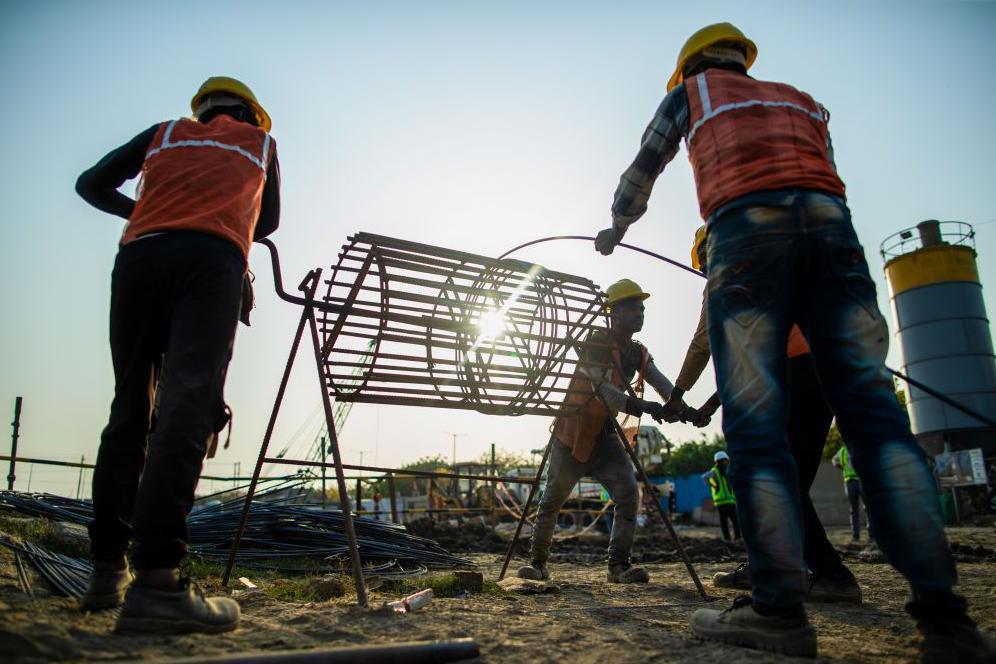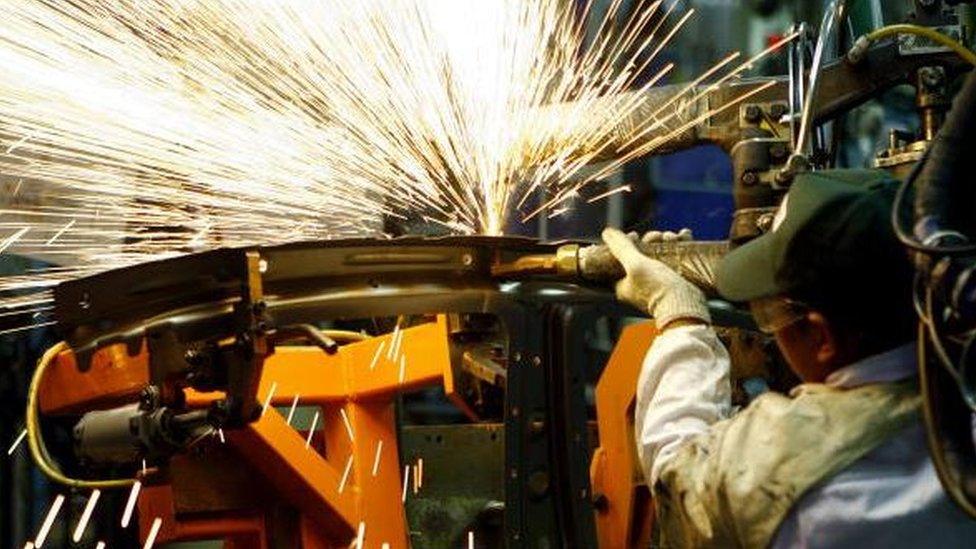Can India become rich before its population grows old?

Workers assemble motorcycles at a factory in Chennai, India
- Published
For the past two years, Prime Minister Narendra Modi has pledged to transform India into a high-income, developed country by 2047. India is also on course to become the world's third largest, external economy in six years, according to several projections.
High-income economies have a per capita Gross National Income - total amount of money earned by a nation's people and businesses - of $13,846 (£10,870) or more, according to the World Bank.
With a per capita income of around $2,400 (£1,885), India is among the lower middle-income countries, external. For some years now, many economists have been warning that India’s economy could be headed for a “middle income trap”.
This happens when a country stops being able to achieve rapid growth easily and compete with advanced economies. Economist Ardo Hannson defines it as a situation when countries "seem to get stuck in a trap where your costs are escalating and you lose competitiveness".
A new World Bank report holds out similar fears. At the current growth rate, India will need 75 years to reach a quarter of America's per capita income, World Development Report, external 2024 says. It also says more than 100 countries – including India, China, Brazil and South Africa - face “serious obstacles” that could hinder their efforts to become high-income countries in the next few decades.
Researchers looked at the numbers from 108 middle-income countries responsible for 40% of the world’s total economic output – and nearly two-thirds of global carbon emissions. They are home to three-quarters of the global population and nearly two-thirds of those in extreme poverty.

India has a per capita income of around $2,400 (£1,885) which puts it in the category of lower middle-income countries
They say these countries face greater challenges in escaping the middle-income trap. These include rapidly ageing populations, rising protectionism in advanced economies and the urgent need for an accelerated energy transition.
“The battle for global economic prosperity will be largely won or lost in middle-income countries,” says Indermit Gill, chief economist of the World Bank and one of the study's authors.
“But too many of these countries rely on outmoded strategies to become advanced economies. They depend just on investment for too long - or they switch prematurely to innovation.”
For example, the researchers say, the pace at which businesses can grow is often slow in middle-income countries.
In India, Mexico, and Peru, firms that operate for 40 years typically double in size, while in the US, they grow seven-fold in the same period. This indicates that firms in middle-income countries struggle to grow significantly, but still survive for decades. Consequently, nearly 90% of firms in India, Peru, and Mexico have fewer than five employees, with only a small fraction having 10 or more, the report says.

Experts say India needs a new approach if it is to join the league of developed countries
Mr Gill and his fellow researchers advocate a new approach: these countries need to focus on more investment, infuse new technologies from around the world and grow innovation.
South Korea exemplifies this strategy, the report says.
In 1960, its per capita income was $1,200 - it rose to $33,000 by 2023.
Initially, South Korea boosted public and private investment. In the 1970s, it shifted to an industrial policy that encouraged domestic firms to adopt foreign technology and advanced production methods.
Companies like Samsung responded. Initially a noodle-maker, Samsung began producing TV sets for domestic and regional markets by licensing technologies from Japanese firms.
This success created a demand for skilled professionals. The government increased budgets and set targets for public universities to develop these skills. Today, Samsung is a global innovator and one of the world's largest smartphone manufacturers, the report says.

Samsung began as a noodle maker and became one of the world's largest smartphone manufacturers
Countries like Poland and Chile followed similar paths, the report says. Poland boosted productivity by adopting Western European technologies. Chile encouraged technology transfer to drive local innovation, famously adapting Norwegian salmon farming techniques to become a top salmon exporter.
History provides enough clues about an impending middle-income trap. Researchers reveal that as countries grow wealthier, they often hit a "trap" at around 10% of US GDP per capita ($8,000 today), placing them in the middle-income range. That’s roughly in the middle of what the bank classifies as “middle-income” countries.
Since 1990, only 34 middle-income countries have transitioned to high-income status, with over a third benefiting from integration into European Union (EU) or newfound oil reserves.
Economists Raghuram Rajan and Rohit Lamba separately estimate that even at a very respectable per capita income growth rate of 4%, India’s per capita income will reach $10,000 only by 2060, which is lower than China’s level today.
“We must do better. Over the next decade, we will see a possible population dividend, that is rise in the share of our population of working age, before we, like other countries, succumb to ageing,” they write in their new book Breaking The Mould: Reimagining India's Economic Future.
“If we can generate good employment for all our youth, we will accelerate growth and have a shot at becoming comfortably upper middle class before our population starts ageing.”
In other words, the economists wonder, “Can India become rich before it becomes old?"
Follow BBC India on Instagram, external, YouTube, external, Twitter, external and Facebook, external
Related topics
- Published17 May 2019
